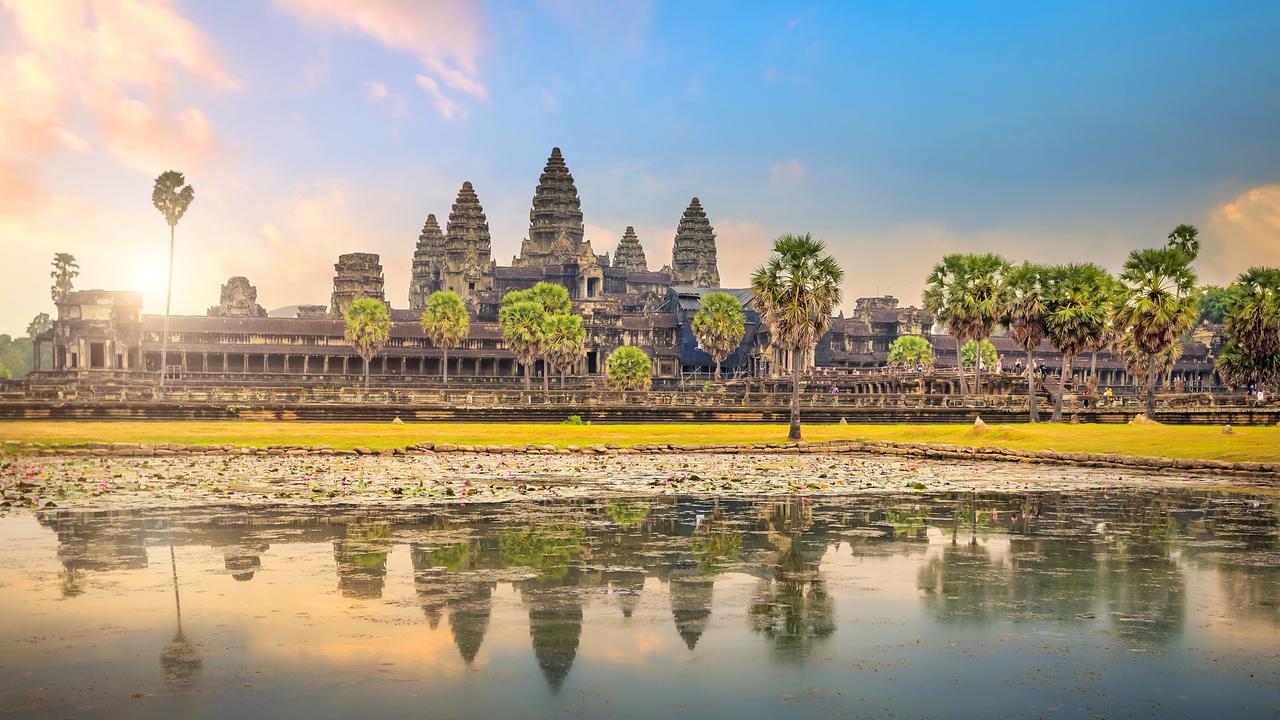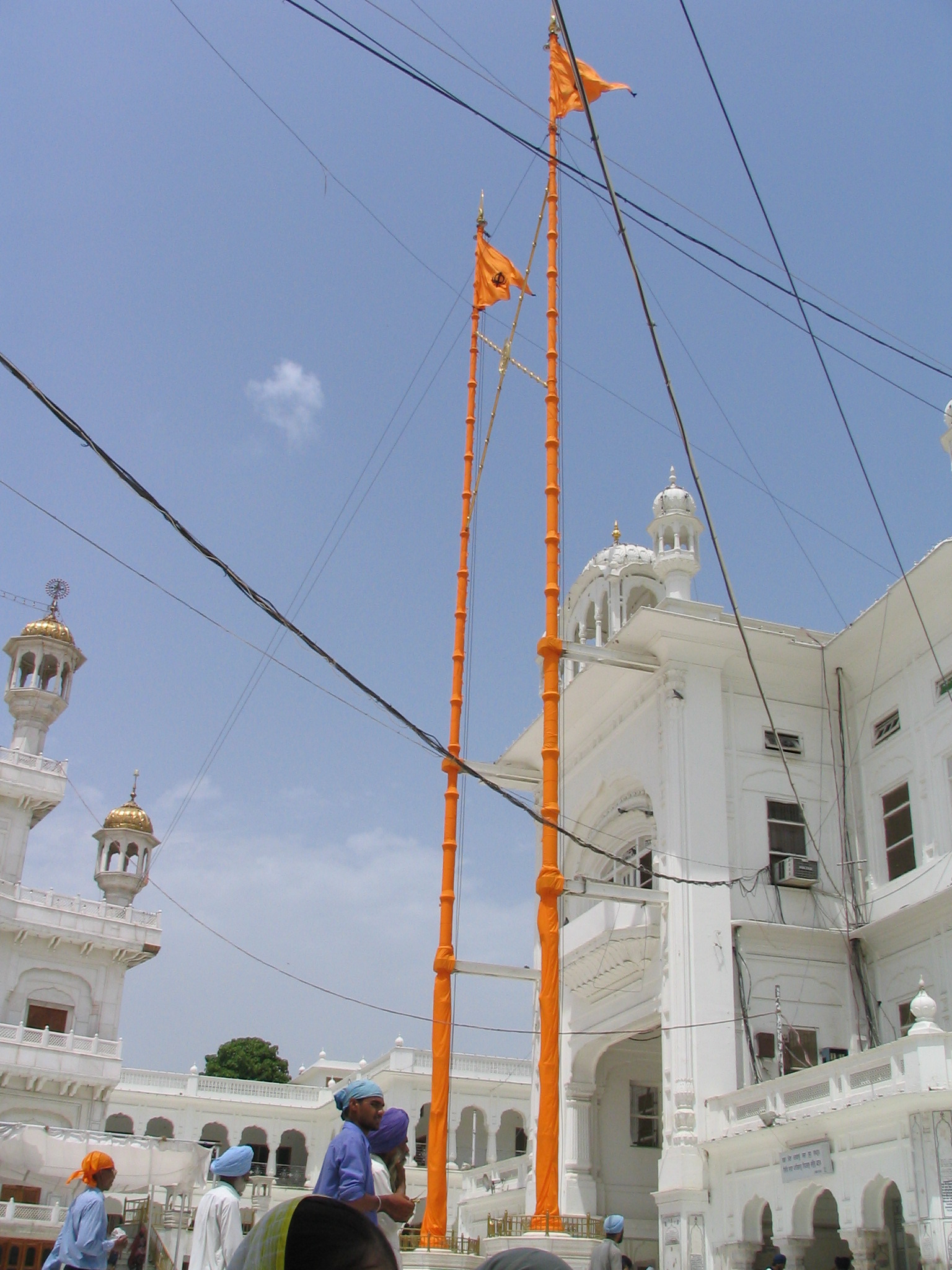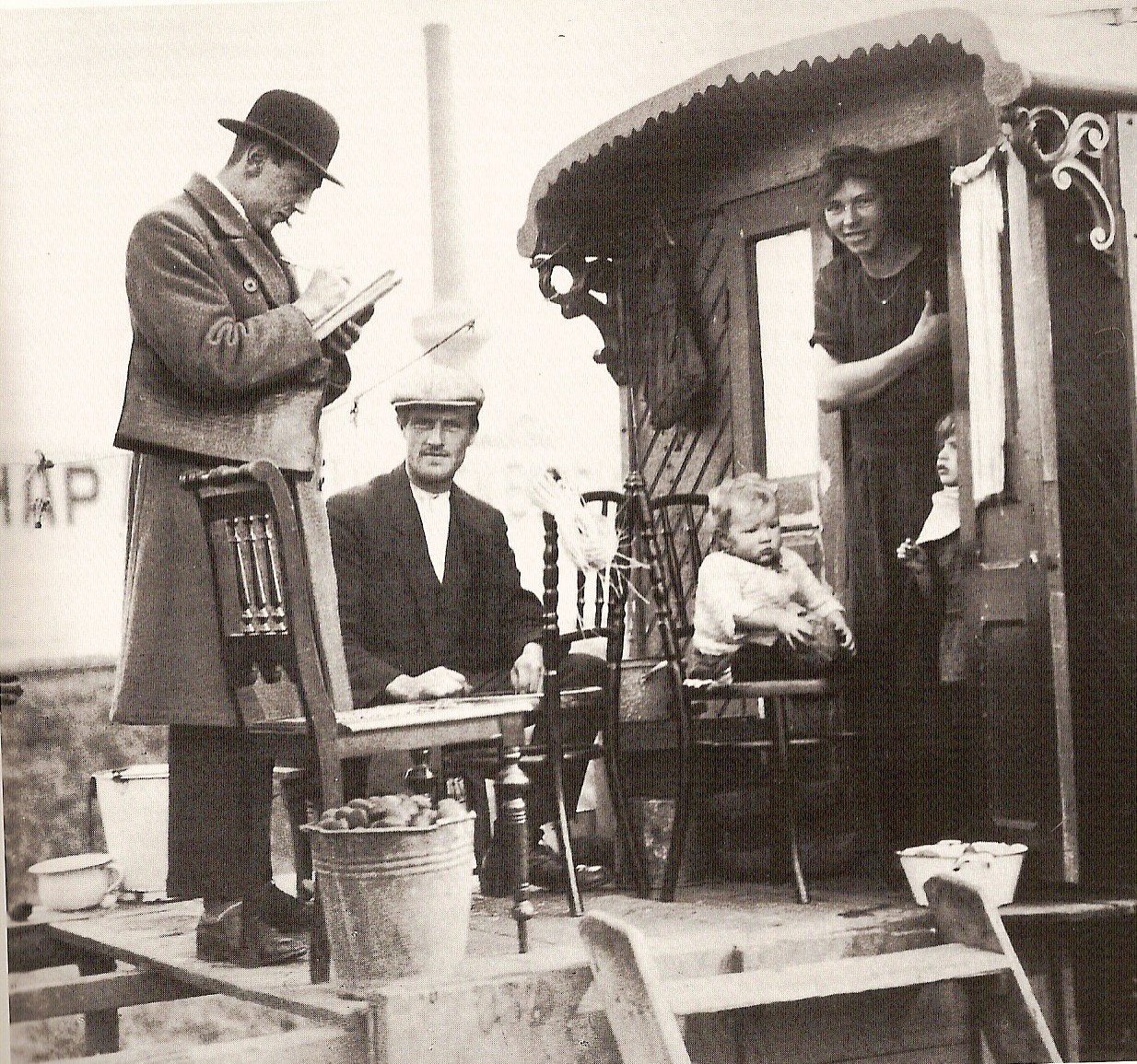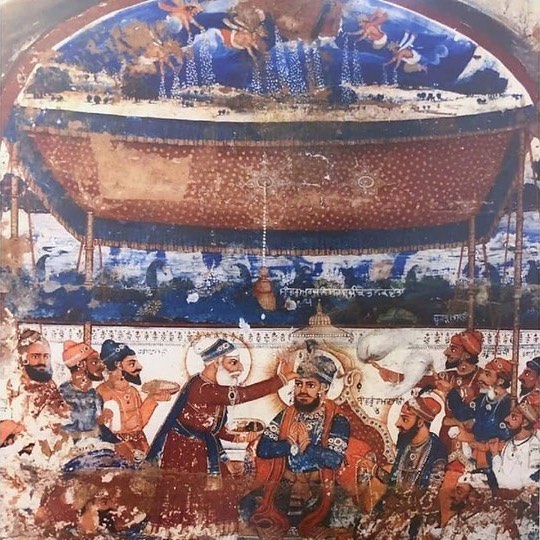|
Kartarpur, India
Kartarpur is a town, near the city of Jalandhar in Jalandhar district in the Indian state of Punjab and is located in the Doaba region of the state. It was founded by the fifth Guru of the Sikhs, Guru Arjan. Geography Kartarpur is located at . It has an average elevation of 228 metres (748 feet). It is situated at a distance of 15 km from Jalandhar towards Amritsar on G.T. Road (National Highway 1). Demographics India census, Kartarpur had a population of 25,152. Males constitute 54% of the population and females 46%. Kartarpur has an average literacy rate of 69%, higher than the national average of 59.5%: male literacy is 72%, and female literacy is 66%. In Kartarpur, 12% of the population is under six years of age. Kartarpur has 14 municipal wards. Jang-e-Azadi Kartarpur Museum Jang-e-Azadi Memorial is a memorial and museum being built in Kartarpur town of Punjab, India, in memory of contribution and sacrifices made by the Punjabi community in Indian indep ... [...More Info...] [...Related Items...] OR: [Wikipedia] [Google] [Baidu] |
Town
A town is a human settlement. Towns are generally larger than villages and smaller than city, cities, though the criteria to distinguish between them vary considerably in different parts of the world. Origin and use The word "town" shares an origin with the German language, German word , the Dutch language, Dutch word , and the Old Norse . The original Proto-Germanic language, Proto-Germanic word, *''tūnan'', is thought to be an early borrowing from Proto-Celtic language, Proto-Celtic *''dūnom'' (cf. Old Irish , Welsh language, Welsh ). The original sense of the word in both Germanic and Celtic was that of a fortress or an enclosure. Cognates of ''town'' in many modern Germanic languages designate a fence or a hedge. In English and Dutch, the meaning of the word took on the sense of the space which these fences enclosed, and through which a track must run. In England, a town was a small community that could not afford or was not allowed to build walls or other larger fort ... [...More Info...] [...Related Items...] OR: [Wikipedia] [Google] [Baidu] |
Jalandhar
Jalandhar is the third most-populous city in the Indian state of Punjab and the largest city in Doaba region. Jalandhar lies alongside the Grand Trunk Road and is a well-connected rail and road junction. Jalandhar is northwest of the state capital Chandigarh, south-east of Amritsar and north of Ludhiana. Jalandhar is about 381 km (230 miles) from national capital Delhi. The famous road NH1 crosses from Jalandhar. History The history of Jalandhar District comprises three periods — ancient, medieval and modern. The city may be named after Jalandhara, a Nath Guru, who was from here. . The city was founded by Devasya Verma as mentioned in Vedas. Other possibilities include that it was the capital of the kingdom of Lava, son of Rama or that the name derives from the vernacular term ''Jalandhar'', meaning area inside the water, i.e., tract lying between the two rivers Satluj and Beas. The whole of Punjab and the area of present Jalandhar District was part of the Indus ... [...More Info...] [...Related Items...] OR: [Wikipedia] [Google] [Baidu] |
Firozpur Railway Division
Firozpur railway division is one of the five railway divisions under Northern Railway zone ( NR ) of Indian Railways. This railway division was formed on 14 April 1952 and its headquarters is located at Firozpur in the state of Punjab, India. Delhi railway division, Ambala railway division, Lucknow NR railway division and Moradabad railway division are the other railway divisions under NR Zone headquartered at New Delhi New Delhi (, , ''Naī Dillī'') is the Capital city, capital of India and a part of the NCT Delhi, National Capital Territory of Delhi (NCT). New Delhi is the seat of all three branches of the government of India, hosting the Rashtrapati B .... List of railway stations and towns The list includes the stations under the Firozpur railway division and their station category. Stations closed for Passengers - References Divisions of Indian Railways 1952 establishments in East Punjab * {{India-rail-transport-stub ... [...More Info...] [...Related Items...] OR: [Wikipedia] [Google] [Baidu] |
Ambala–Attari Line
The Ambala–Attari line is a railway line connecting in the Indian state of Haryana and in Punjab. The line is under the administrative jurisdiction of Northern Railway. History The Scinde, Punjab & Delhi Railway completed the Multan–Lahore–Amritsar line in 1865 and the -long Amritsar–Ambala–Saharanpur–Ghaziabad line in 1870 connecting Multan (now in Pakistan) with Delhi. Amritsar–Attari section was completed on the route to Lahore in 1862. Hoshiarpur was linked by rail with Jullundur Cantonment in 1913. Electrification The Ambala–Amritsar sector is electrified. It was electrified in parts. The Shahbad Markanda-Mandi Gobindgarh sector was electrified in 1995–96, the Mandi Gobindgarh–Ludhiana sector in 1996–97, the Phillaur–Phagwara sector in 2002–03, and the Phagwara–Jallandhar City–Amritsar in 2003–04. Sheds and workshops Ambala has an outstation shed for Shakurbasti WDS-4 diesel locos. Ludhiana diesel shed holds 170+ locos including W ... [...More Info...] [...Related Items...] OR: [Wikipedia] [Google] [Baidu] |
Kartarpur Railway Station
Kartarpur railway station a railway station on Ambala–Attari line under Firozpur railway division of Northern Railway zone. This is situated at Kartarpur in Jalandhar district in the Indian state of Punjab. History Amritsar–Attari line was completed in 1862. the electrification of the line was completed in different period. Shahbad Markanda-Mandi Gobindgarh sector was electrified in 1995–96, the Mandi Gobindgarh–Ludhiana sector in 1996–97, the Phillaur–Phagwara sector in 2002–03, and the Phagwara– Jallandhar City–Amritsar Amritsar (), historically also known as Rāmdāspur and colloquially as ''Ambarsar'', is the second largest city in the Indian state of Punjab, after Ludhiana. It is a major cultural, transportation and economic centre, located in the Maj ... in 2003–04. References {{Reflist Railway stations in Jalandhar district Firozpur railway division Railway stations opened in 1862 ... [...More Info...] [...Related Items...] OR: [Wikipedia] [Google] [Baidu] |
Kala Bahian
Kala or Kalah may refer to: Religion Hinduism *Kāla, a Sanskrit word meaning ''time'' *Kāla, a Hindu deity of time, destiny, death and destruction closely related to Yama and Shiva. *Kalā, a Sanskrit word meaning ''performing arts'' *Kala Bo, a Hindu consort goddess of Ganesha *Kirtimukha, a monster face in Asian iconography *Batara Kala, a god in Javanese and Balinese mythology * Kala Ratri, a Hindu goddess Jainism *One of the six fundamental principles Geography Kala can be an alternate spelling of '' qal'a'' ("fortress") in Persian, Turkish, etc. Albania * Kala e Dodës, a municipality in Dibër County Algeria * El Kala District, district **El Kala, the district seat **El Kala National Park, national park in El Kala District Georgia *Narikala, ancient fortress overlooking Tbilisi Iran * Kala, Behshahr, Mazandaran Province * Kalah, Hormozgan, village in Hormozgan Province *Kala, Markazi, village * Kala, Nur, Mazandaran Province *Kala, Semnan, village Kyrgyzstan * Kala, ... [...More Info...] [...Related Items...] OR: [Wikipedia] [Google] [Baidu] |
Temples
A temple (from the Latin ) is a building reserved for spiritual rituals and activities such as prayer and sacrifice. Religions which erect temples include Christianity (whose temples are typically called churches), Hinduism (whose temples are called Mandir), Buddhism, Sikhism (whose temples are called gurudwara), Jainism (whose temples are sometimes called derasar), Islam (whose temples are called mosques), Judaism (whose temples are called synagogues), Zoroastrianism (whose temples are sometimes called Agiary), the Baha'i Faith (which are often simply referred to as Baha'i House of Worship), Taoism (which are sometimes called Daoguan), Shinto (which are sometimes called Jinja), Confucianism (which are sometimes called the Temple of Confucius), and ancient religions such as the Ancient Egyptian religion and the Ancient Greek religion. The form and function of temples are thus very variable, though they are often considered by believers to be, in some sense, the "hou ... [...More Info...] [...Related Items...] OR: [Wikipedia] [Google] [Baidu] |
Khusropur
Khusropur is a village in Kapurthala district of Punjab State, India. It is located from Kapurthala, which is both district and sub-district headquarters of Khusropur. The village is administrated by a Sarpanch who is an elected representative of village. Demography According to the report published by Census India in 2011, Khusropur has 169 houses with the total population of 884 persons of which 479 are male and 405 females. Literacy Literacy in its broadest sense describes "particular ways of thinking about and doing reading and writing" with the purpose of understanding or expressing thoughts or ideas in written form in some specific context of use. In other words, hum ... rate of Khusropur is 74.43%, lower than the state average of 75.84%. The population of children in the age group 0–6 years is 94 which is 10.63% of the total population. Child sex ratio is approximately 709, lower than the state average of 846. Population data References Exter ... [...More Info...] [...Related Items...] OR: [Wikipedia] [Google] [Baidu] |
Gurudwara
A gurdwara (sometimes written as gurudwara) (Gurmukhi: ਗੁਰਦੁਆਰਾ ''guradu'ārā'', meaning "Door to the Sikh gurus, Guru") is a place of assembly and place of worship, worship for Sikhs. Sikhs also refer to gurdwaras as ''Gurdwara Sahib''. People from all faiths are welcomed in gurdwaras. Each gurdwara has a ''Darbar Sahib Hall, Darbar Sahib'' where the current and everlasting guru of the Sikhs, the scripture Guru Granth Sahib, is placed on a (an elevated throne) in a prominent central position. Any congregant (sometimes with specialized training, in which case they can be known by the term granthi) may recite, sing, and explain the verses from the Guru Granth Sahib, in the presence of the rest of the congregation. All gurdwaras have a hall, where people can eat free vegetarian food served by volunteers at the gurdwara. They may also have a medical facility room, library, nursery, classroom, meeting rooms, playground, sports ground, a gift shop, and finally a repair ... [...More Info...] [...Related Items...] OR: [Wikipedia] [Google] [Baidu] |
Gurdwara Tham Sahib, Kartarpur (Jalandhar)
A gurdwara (sometimes written as gurudwara) (Gurmukhi: ਗੁਰਦੁਆਰਾ ''guradu'ārā'', meaning "Door to the Guru") is a place of assembly and worship for Sikhs. Sikhs also refer to gurdwaras as ''Gurdwara Sahib''. People from all faiths are welcomed in gurdwaras. Each gurdwara has a '' Darbar Sahib'' where the current and everlasting guru of the Sikhs, the scripture Guru Granth Sahib, is placed on a (an elevated throne) in a prominent central position. Any congregant (sometimes with specialized training, in which case they can be known by the term granthi) may recite, sing, and explain the verses from the Guru Granth Sahib, in the presence of the rest of the congregation. All gurdwaras have a hall, where people can eat free vegetarian food served by volunteers at the gurdwara. They may also have a medical facility room, library, nursery, classroom, meeting rooms, playground, sports ground, a gift shop, and finally a repair shop. A gurdwara can be identified from a dista ... [...More Info...] [...Related Items...] OR: [Wikipedia] [Google] [Baidu] |
Census
A census is the procedure of systematically acquiring, recording and calculating information about the members of a given population. This term is used mostly in connection with national population and housing censuses; other common censuses include censuses of agriculture, traditional culture, business, supplies, and traffic censuses. The United Nations (UN) defines the essential features of population and housing censuses as "individual enumeration, universality within a defined territory, simultaneity and defined periodicity", and recommends that population censuses be taken at least every ten years. UN recommendations also cover census topics to be collected, official definitions, classifications and other useful information to co-ordinate international practices. The UN's Food and Agriculture Organization (FAO), in turn, defines the census of agriculture as "a statistical operation for collecting, processing and disseminating data on the structure of agriculture, coverin ... [...More Info...] [...Related Items...] OR: [Wikipedia] [Google] [Baidu] |
Sri Guru Arjan Dev Ji
Guru Arjan (Gurmukhi: ਗੁਰੂ ਅਰਜਨ, pronunciation: ; 15 April 1563 – 30 May 1606) was the first of the two Gurus martyred in the Sikh faith and the fifth of the ten total Sikh Gurus. He compiled the first official edition of the Sikh scripture called the Adi Granth, which later expanded into the Guru Granth Sahib. He was born in Goindval, in the Punjab, the youngest son of Bhai Jetha, who later became Guru Ram Das, and Mata Bhani, the daughter of Guru Amar Das. He completed the construction of Darbar Sahib at Amritsar, after the fourth Sikh Guru founded the town and built a sarovar. Guru Arjan compiled the hymns of previous Gurus and of other saints into Adi Granth, the first edition of the Sikh scripture, and installed it in the Harimandir Sahib. Guru Arjan reorganized the Masands system initiated by Guru Ram Das, by suggesting that the Sikhs donate, if possible, one-tenth of their income, goods or service to the Sikh organization (''dasvandh''). The ''Masand' ... [...More Info...] [...Related Items...] OR: [Wikipedia] [Google] [Baidu] |
.jpg)
.jpg)





